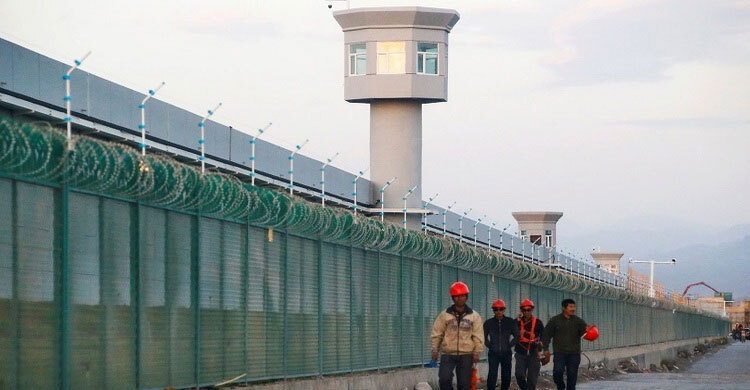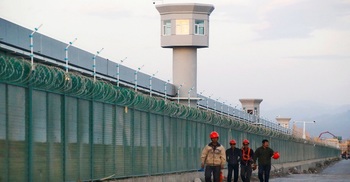China has built 380 internment camps in Xinjiang

China has built nearly 400 internment camps in Xinjiang region, with construction on dozens continuing over the last two years, even as Chinese authorities said their “re-education” system was winding down, an Australian thinktank has found.
The network of camps in China’s far west, used to detain Uighurs and people from other Muslim minorities, include 14 that are still under construction, according to the latest satellite imaging obtained by the Australian Strategic Policy Institute.
In total ASPI identified 380 detention centres established across the region since 2017, ranging from lowest security re-education camps to fortified prisons.
That is over 100 more than previous investigations have uncovered, and the researchers believe they have now identified most of the detention centres in the region.
“The evidence in this database shows that despite Chinese officials’ claims about detainees graduating from the camps, significant investment in the construction of new detention facilities has continued throughout 2019 and 2020,” said ASPI researcher Nathan Ruser.
The information has been made public, including the coordinates for individual camps, in a database that can be accessed online, the Xinjiang Data Project.
The camps were identified using survivor accounts, other projects tracking internment centres, and satellite images.
ASPI said nighttime images were particularly useful, as they looked for areas that were newly illuminated outside towns; often these were the sites of freshly built detention centres, with daytime images giving a clear picture of construction.
Many are also near industrial parks; there have been widespread reports that inmates at some internment camps have been used as forced labour.
“Camps are also often co-located with factory complexes, which can suggest the nature of a facility and highlight the direct pipeline between arbitrary detention in Xinjiang and forced labour,” the report said.
Beijing insists there are no human rights abuses in Xinjiang. Chinese authorities initially denied the existence of internment camps, then later described them as vocational training and re-education programmes that aim to alleviate poverty and counter terrorism threats.
Last year a senior official claimed that most people held in camps had “returned to society”. However, China has not allowed journalists, human rights groups or diplomats independent access to the camps, and visitors to the region face heavy surveillance.
Most information about the camps, and a wider government campaign against Muslim minorities in the region, has come from survivors who have fled abroad, leaked Chinese government documents, and satellite images that have confirmed the location and existence of camps.
People have been targeted for “offences” as trivial as owning a Qur’an, or abstaining from eating pork. Reported abuses include detailed arbitrary detentions, torture and medical neglect in the detention camps and coercive birth control.
Uighur families have been forced to have Han Chinese officials living in their homes as “relatives”, part of a comprehensive surveillance system, that also sees people monitored online, and through a wide network of CCTV cameras in public places.
The ASPI project captures the vast scale of both individual detention camps, and the entire network of internment facilities, mostly thrown up in the last half decade. A map created from the ASPI database shows an arc of camps across the populated parts of the region, though the thinktank noted that the rate of growth in detention facilities was slowing.
The largest camp documented in the region, Dabancheng, sits just outside the regional capital of Urumqi. New construction there over the course of 2019 stretched for more than a kilometre – and in total it now has nearly 100 buildings.
A new detention centre in the much smaller historic Silk Road city of Kashgar, opened as recently as January this year, has 13 five-storey residential buildings spread over 25 hectares (60 acres), surrounded by a 14-metre-high wall and watch-towers, the report said.
ASPI has divided the camps into four different categories, reflecting levels of fortification and controls on inmates.
About half of the 60 facilities which have recently been expanded are higher security, suggesting a shift in the nature of the central government campaign against minorities in Xinjiang.
The report has also found about 70 camps that appear to have had security controls reduced, with internal fences and perimeter walls taken down. Eight may have been decommissioned entirely. These were mostly lower security facilities, the report said.
The apparent shift in focus to higher security detention centres fits with reports and survivor testimony that “a significant number of detainees that have not shown satisfactory progress in political indoctrination camps have been transferred to higher security facilities, which expanded to accommodate them”, the report said.
Source: The Guardian







